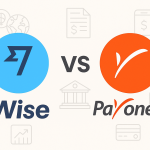How to Pay Freelancers in 2025: Best Methods and Platforms
Freelancing continues to grow globally, and with it comes the challenge for businesses and clients: how to pay freelancers in a way that is secure, fast, and cost-effective. By 2025, payment technologies have evolved significantly, providing multiple options. This article reviews the best methods for paying freelancers, including their pros, cons, and recommended platforms.
1. Bank Transfers
Traditional bank transfers remain a common way to pay freelancers. They are especially useful for domestic transactions. In 2025, international bank transfers have improved with faster processing via SWIFT gpi, but fees can still be high for cross-border payments.
- ✅ Reliable and widely accepted
- ✅ Works well for large sums
- ❌ Expensive for international payments
- ❌ Slower compared to modern fintech platforms
2. Payoneer
Payoneer has become a leading solution for freelancer payments. It supports over 200 countries, offers virtual receiving accounts in multiple currencies, and provides fast withdrawals to local banks. Many freelancing platforms like Upwork and Fiverr use Payoneer as a primary payout option.
👉 For smoother cross-border payouts and lower FX friction,
create a Payoneer account
and connect it to your freelancer/vendor list. This keeps your payout ops simple while giving contractors flexible withdrawal choices.
- ✅ Supports multiple currencies
- ✅ Faster than bank transfers
- ✅ Popular with freelancers worldwide
- ❌ Fees can vary by region
3. Wise (Formerly TransferWise)
Wise is a favorite for cross-border freelancer payments thanks to its low fees and real exchange rates. Clients can pay directly to freelancers’ bank accounts in their local currencies, making it cost-efficient and transparent.
- ✅ Real mid-market exchange rates
- ✅ Low and transparent fees
- ✅ Fast processing times
- ❌ Requires both parties to have accounts for optimal use
4. PayPal
PayPal remains one of the most widely used freelancer payment systems. However, in 2025 it faces growing competition due to high fees. It is still useful for quick payments, especially for smaller sums.
- ✅ Very popular and easy to use
- ✅ Instant transactions
- ❌ High fees (up to 5–7%)
- ❌ Exchange rates are not favorable
5. Crypto Payments
An emerging trend in 2025 is paying freelancers via cryptocurrency. Bitcoin, Ethereum, and stablecoins (USDT, USDC) are increasingly accepted. This method is especially popular for freelancers in countries with unstable banking systems.
- ✅ Fast, borderless transactions
- ✅ Lower fees than traditional banks
- ✅ Good option for global freelancers
- ❌ Volatility risk (except for stablecoins)
- ❌ Not universally accepted
6. Freelance Platforms’ Escrow Payments
Platforms like Upwork, Fiverr, and Toptal offer built-in escrow payment systems. These protect both clients and freelancers by ensuring funds are released only after agreed milestones are completed.
- ✅ Secure for both sides
- ✅ Automated invoicing
- ❌ Platform fees (10–20%)
Best Practices for Paying Freelancers
- Agree on payment terms before starting work
- Use contracts or digital agreements
- Prefer secure platforms with buyer and seller protection
- Keep transaction records for accounting and tax purposes
In 2025, the best method to pay freelancers depends on your priorities—speed, fees, or convenience. For international client–contractor relationships, Payoneer and Wise usually provide the best balance of cost and reach. Stay flexible and let contractors choose from approved methods while protecting your compliance and cash flow.
Disclosure: This article contains affiliate links. We may earn a commission if you sign up for Payoneer via our link, at no extra cost to you.





